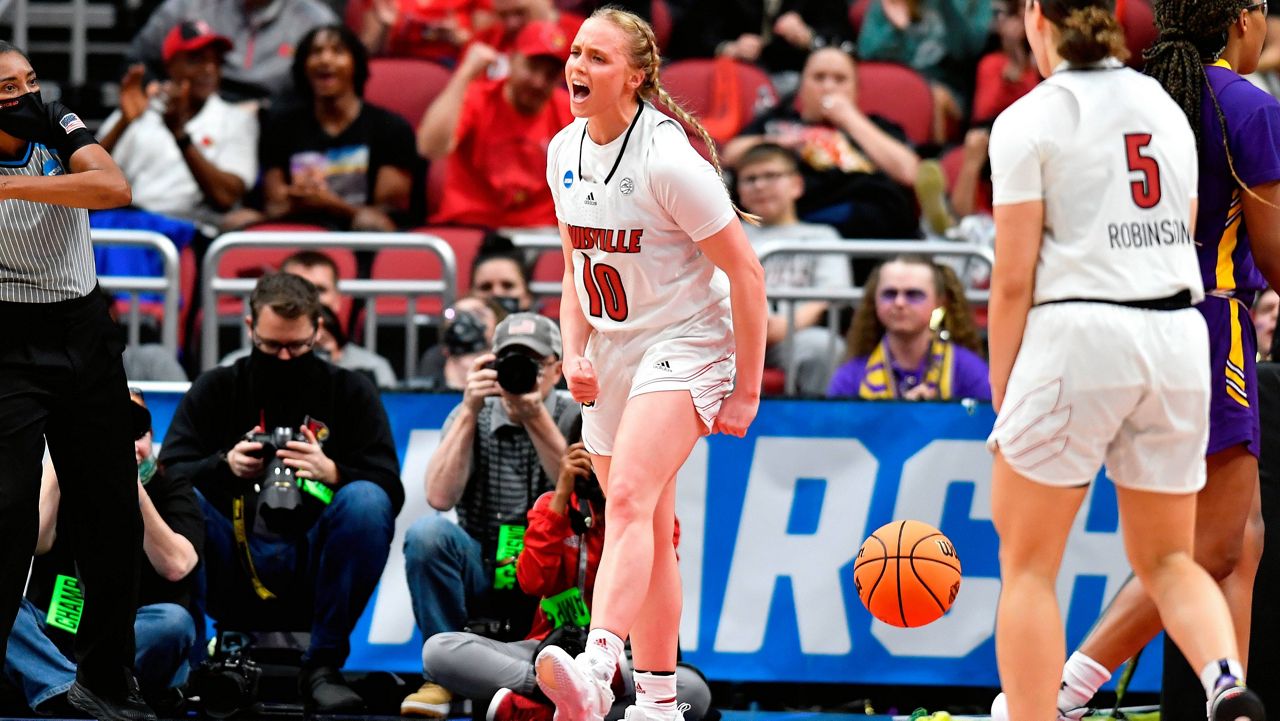MINNEAPOLIS, Minn. — Players at the women’s Final Four this week have been calling for equity in their sport on various fronts — just not when it comes to cashing in on their celebrity. Turns out they just might be better at capitalizing on the new rules than their male counterparts.
Women's basketball is ranked second, behind only college football and ahead of men's basketball in the amount of income generated by name, image and likeness deals, according to Blake Lawrence, the chief executive of Opendorse, a company that helps colleges and athletes navigate the NIL landscape.
As their exposure increases during the NCAA Tournament, members of Final Four teams — and especially stars such as Hailey Van Lith, Cameron Brink, Aliyan Boston and Paige Bueckers — will have the opportunity to make tens of thousands of dollars from endorsement deals, experts say.
That’s on top of the money that top social-media influencers, such as Bueckers, are already making, which Lawrence estimates is up to $1 million.
“There are women basketball players that are pulling in up to $20,000 for one tweet leading up to March Madness,” he said. “You can imagine that each round there is another online advertiser that would be interested in compensating them handsomely."
Details on individual deals are not generally publicly released, not by the schools, athletes or the companies paying for the exposure. But it's not hard to figure out and breakout performances — such as Bueckers’ 27-point effort in UConn's double-overtime thriller over North Carolina State in front of a large TV audience — only enhance earning potential.
“When you have all eyes on you, marketing values skyrocket,” Lawrence said.
Bueckers, who has long-term deals with companies such as Gatorade, said she told her agents that she is not doing any more endorsements until the tournament is over because she wants to focus on basketball.
“I think women’s basketball is doing really well in that regard, just with the opportunities we’re given, and sort of the chances we’re getting in the field,” she said. “I think we’re taking great strides with it, and I think that’s really important for the growth of our game.”
LaKeisha Marsh, a Chicago attorney who specializes in higher education and college athletics, agrees.
Marsh, who also teaches sports law and ethics at Northwestern, said many players have done a better job than the schools in marketing women's college basketball to a young audience.
“These women dominate social media, whether its their presence or ability for their audience to relate to them on so many different levels," she said. “Young people who watch these TikTok videos and see these various brands on social media, now they want to see these women in action.”
Marsh said she is concerned that many of the top money-makers, at least at this point, are white women. As more companies notice there is a big young, racially diverse audience on social media, she said she hopes that will change.
There are general guidelines that limit what schools can do with NIL as a recruiting enticement, but it's a very loose area. Notre Dame coach Niele Ivey said she will point out to recruits the center that the school established to help athletes navigate NIL. She also believes that young women will be attracted more to schools that consistently make runs in the tournament.
“I think it’s incredible, she said. ”I’m hoping that us advancing is giving them more opportunities just because of them being in the Sweet 16."
Sen. Chris Murphy, D-Conn., has been pushing for some uniformity nationwide in how NIL rules are implemented, though Congress does not seem to be close to moving forward on the topic. He said it is especially important for women whose peak earning potential in athletics comes during their college careers. Experts note that there are only 12 WNBA rosters with 12 slots each, and the endorsement money there is not as deep as it is in college.
“For women, the ability to make money while in college off of endorsement deals can be relatively more lucrative than it is for men,” Murphy said. “To me, it has always been a way to promote equity between men's and women's sports.”
Lawrence said the next thing to watch is how schools use donor groups to entice top female players to their schools and how those women use their power from NIL in the transfer portal.
Fresno State twin stars Haley and Hanna Cavinder have millions of social media followers who watch their videos and have cashed in accordingly. They have now decided to go somewhere else for their two remaining years of eligibility.
“They are great players and would make any team better, but when the Cavinder twins are in the portal, some collective or donor group may be more interested in getting them to their campus than maybe another athlete," Lawrence said. “I'll be interested to see where they go and why.”



